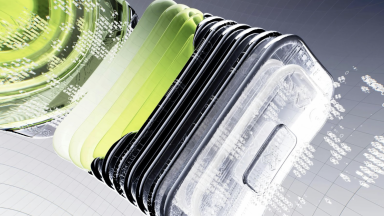
From Chat-GPT to Midjourney, artificial intelligence (AI) tools have flooded online spaces with generated content, causing internet users to doubt the authenticity of digital content. While AI resources have proven beneficial to streamlining workflows and optimizing efficiency in certain industries, countless users are more concerned with originality in the content they consume. Artists, creatives, and writers have pointed to the plagiaristic nature of AI, which developers train on existing content available online, including their own work.
The Role of an AI Detector for Creatives
As digital authenticity comes into question amid the rise of AI technology, both creatives and everyday users have increasingly turned to the AI Detector as a means of protecting themselves online. It is a fact that AI is only becoming more effective at mimicking human-made content, with humans themselves becoming less reliable at identifying AI-generated content at a glance. AI detectors are tools for identifying AI content, using the same AI technology to do so.
How Does an AI Detector Work?
AI detectors are trained using the same technique as the average AI generator, but with a very different goal. Rather than using a single large online dataset to grow and improve, an AI detector is trained on both human-made and AI-generated content so that it can distinguish between characteristics of the two. Effectively, when an AI detector is presented with a piece of AI-generated content, it will identify whether that is the sort of content it would have created.
AI-Generated Text Detectors
Most AI detectors focus on AI-generated text, since models like ChatGPT are some of the most prevalent AI tools online. In order to distinguish between AI-generated and human-written text, an AI detector is trained on datasets of both. This process enables the AI detector to detect the characteristics that best differentiate AI-generated text from human-written text. At this stage of the technology, perplexity and burstiness are the two main characteristics which an AI detector looks for in a given text.
Perplexity and Burstiness
Perplexity refers to the predictability of word choice throughout a text. If a word is confusing or has the potential to hinder the reader’s understanding, an AI will likely avoid it in favor of simple and consistent word choice. The more repetitive and simple a text’s word choice is, the more likely it is to have been AI generated.
Burstiness is similar, referring to the variation of sentence length and structure. Humans vary the length of sentences and switch up the structure far more frequently than AI, which favors streamlined and consistent sentences. The more consistent a sentence’s length and structure is, the more likely it is to have been AI generated.
Concerns of Plagiarism in AI-Generated Content
Of course, plagiarism is another major factor in identifying whether a text was AI-generated. Since AI-generated content is based on existing media, an AI tool is more likely to copy or directly plagiarize something which already exists. AI Detect LLC’s AI detector features plagiarism check integration, not only checking your own original content for plagiarism, but potentially identifying inauthentic AI-generated content.
The problem of plagiarism is closely intertwined with AI-generated content, with numerous creatives raising concerns over the unlawful appropriation of their work. In fact, lawsuits against AI art generators have emerged in recent years which could determine the future of both AI-generated and human-made art.
Promising First Steps for Creatives Against AI
In August, U.S. District Judge William Orric found that Stable Diffusion, a tool used to create hyperrealistic images following a prompt, may have been “built to a significant extent on copyrighted works,” with the intent to “facilitate [infringement].” The direction of AI-generated content is likely to be defined by this case, and others like it, in the coming years.
Furthermore, Judge Orric rebuffed the AI image generators’ arguments that the lawsuit was required to identify specific, individual works which each of the artists alleged were used for training the model. This sort of particularity would have likely been an impossible task, and it is a significant benefit for the artists involved in the case that such a requirement will not be necessary.
“Given the unique facts of this case,” the order clarified, “including the size of the LAION datasets and the nature of defendants’ products, including the added allegations disputing the transparency of the ‘open source’ software at the heart of Stable Diffusion—that level of detail is not required for plaintiffs to state their claims.”
The Emergence of AI-Generated Images
The technology behind AI-generated images has undergone rapid improvement in recent years, resulting in content that has become difficult to distinguish from genuine artwork. The recency of the technology has meant that humans are still fairly effective at identifying inconsistencies in AI-generated images, but images have the potential to be far more impactful than text. A well-placed image can influence a user’s emotions, resulting in a vulnerability to inauthentic media.
How AI Detectors Can Preserve Creativity
While creatives fight against the unlawful use of their work, the average user can turn to AI detectors in order to identify AI-generated content online. Beyond the courtroom, the technology behind an AI detector serves to grant users insight into the originality of creative outlets and resources. Artists, influencers, and digital rights advocates can rely on AI detection tools to preserve creative integrity, curb misinformation, and protect the meaning of what is “real” in the digital age.
With an AI detector, users have the capacity to identify false and misleading AI-generated content online. The creative mission to preserve the integrity of digital spaces is upheld in part by the ability to distinguish between what is reality and what has been fabricated in favor of ease and efficiency. On the journey toward digital authenticity, AI detectors have an essential role to play, especially while legislation starts to come into effect, but even afterward.
Ensuring that AI Is Fair and Ethical
Perhaps it is said best by Joseph Saveri and Matther Butterick, who in addition to filing the Stable Diffusion lawsuit filed lawsuits on behalf of authors against prominent AI platforms: “We’ve filed lawsuits challenging AI image generators for using artists’ work without consent, credit, or compensation. Because AI needs to be fair and ethical for everyone.”

 By Hollywood Life | Created at 2024-11-19 17:14:54 | Updated at 2024-11-24 10:17:36
4 days ago
By Hollywood Life | Created at 2024-11-19 17:14:54 | Updated at 2024-11-24 10:17:36
4 days ago








